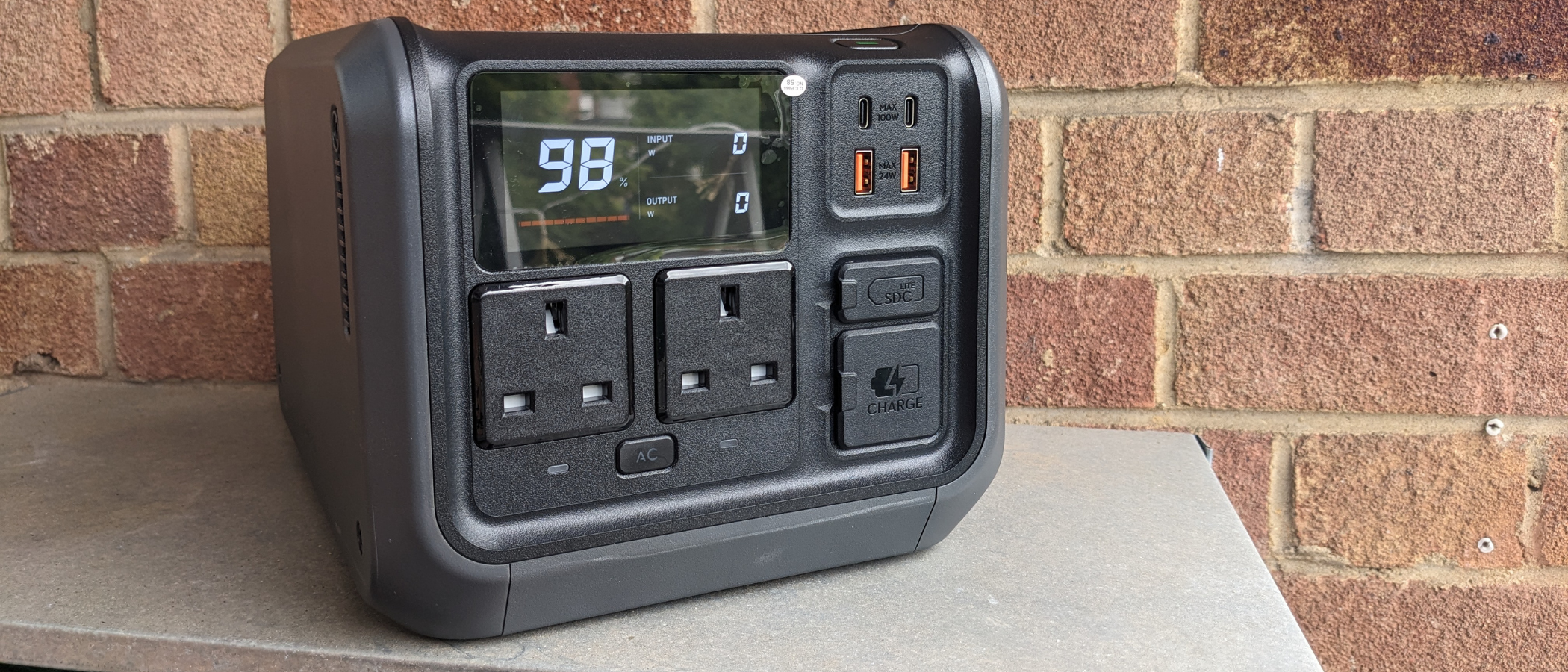TechRadar Verdict
The DJI Power 500 is a nice bit of kit - provided you own a drone. It's smartly designed, with a gorgeously bright screen, and a handful of ports and sockets for charging smaller devices. The stand-out feature, though, is the proprietary SDC Lite socket for recharging drones while out in the field. You can find similarly specced units cheaper without sacrificing port-space, but the unique selling point makes this niche model a must-have for drone pilots.
Pros
- +
Charges DJI drones
- +
Lightweight and portable
- +
Enough ports for weekend trips and adventures
- +
Standard IEC C13/14 socket and connector
Cons
- -
Not a rugged device
- -
Better options if you don’t have a drone
Why you can trust TechRadar
DJI is best known for its aerial cameras - so, we weren’t expecting the company to launch a set of portable power stations designed to charge its popular line-up of drones alongside other devices. But that’s exactly what we have with the DJI Power 500. A small, highly portable unit that’s not too heavy and full of ports and sockets. Can the makers of some of the best drones out there surge ahead in the portable power station market? Having tested many of the best portable station units out there, we put it to the test.
DJI Power 500: Unboxing & first impression
From out of its no-nonsense box, this modest black unit rises, encased in packaging foam and suitably protected, both top and bottom. The DJI Power 500 is sleek and small, and around the same size as the Anker PowerHouse 535, another 512Wh power station.
Once we’d unwrapped the unit, we found the rest of the contents to be thin on the ground - although the inclusion of an on-the-go vehicle charger for drones is a great addition.
Included in the box is:
- 1x DJI Power 500
- 1x quick start guide
- 1x charging cable
- 1x car outlet to SDC cable

DJI Power 500: Fit & feel
Out of the box, the Power 500 came charged a little over halfway, which we expect to see from a device powered by a LiFePO4 battery. The unit itself is fairly classic, although you might struggle to identify this coming from the same company that brought us the DJI Mini 4 Pro or Air 3; there isn’t that Apple-like brand consistency acting as a throughline between products.
While it may not break the mould, it still looks great - a clean, black box with curved edges, rubberized feet, and a svelte silhouette. USB ports and the pill-shaped power button on top lay flush, while sockets and inputs are slightly raised, giving the Power 500 some sense of profile.
Weighing a little over 7kg / 16lb, it’s just light enough for one person to carry - a feat made easier with the built-in handle, although you’ll feel the load in your arms.
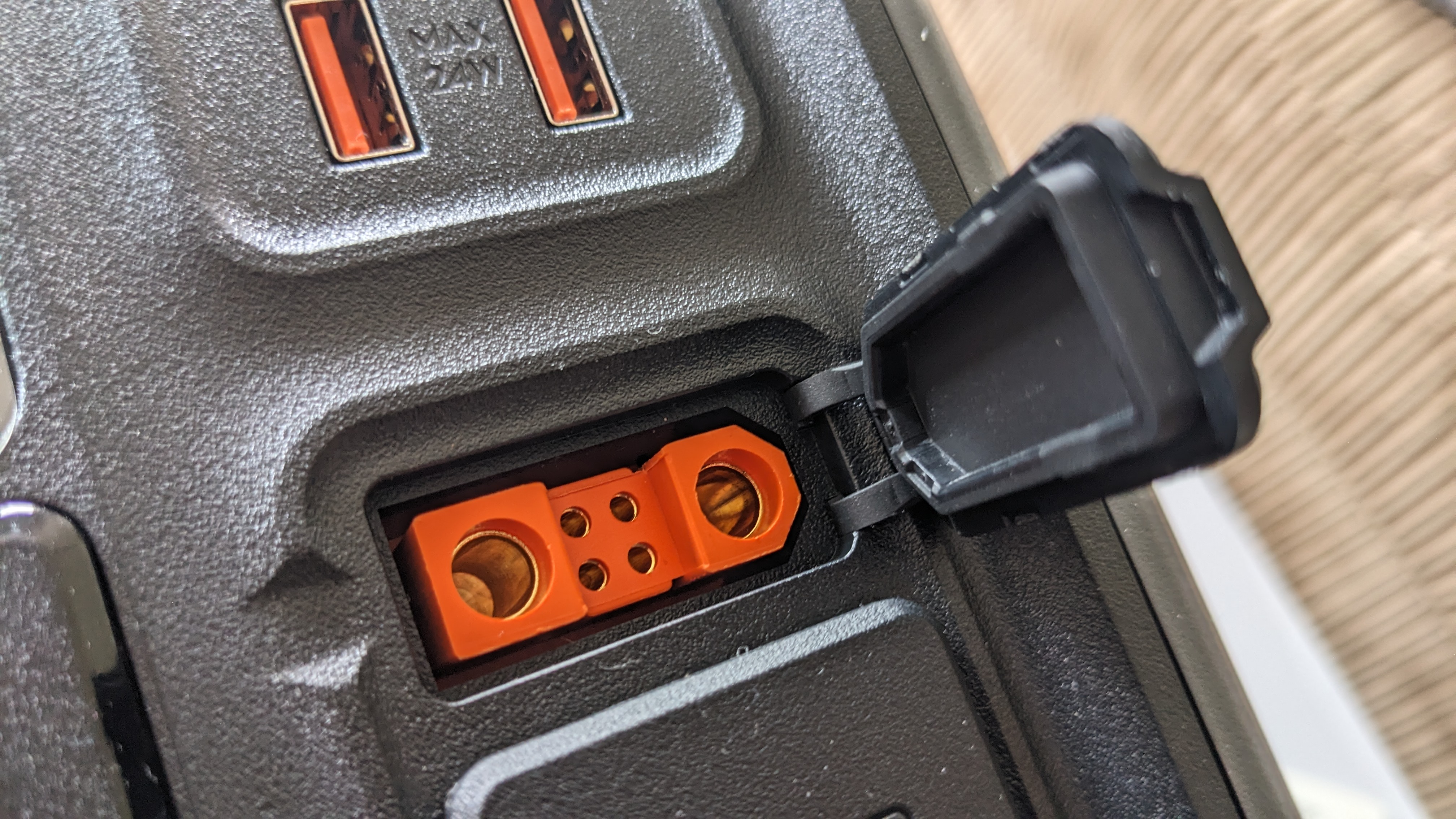
On the front of the unit you’ll find:
- 2x AC Output
- 2x USB-C
- 2x USB-A
- 1x SDC Lite
- 1x AC Input
- AC button
- Power button
- Fast charge switch
Given the nature of this device, that’s about what we’d expect to see on a portable power station of this size (although you can never have too many ports). And, of course, it has the added bonus of being able to charge SDC-powered drones alongside mobile devices.
Rapping on the chassis of the power station, the body has a definite plastic feel to it. It feels hard and durable enough, but this isn’t designed for rugged outdoor use, as evidenced by the lack of IP rating. At least the SDC port and AC input feature rubber gaskets for extra protection, but for best results, avoid exposing the Power 500 to the elements.
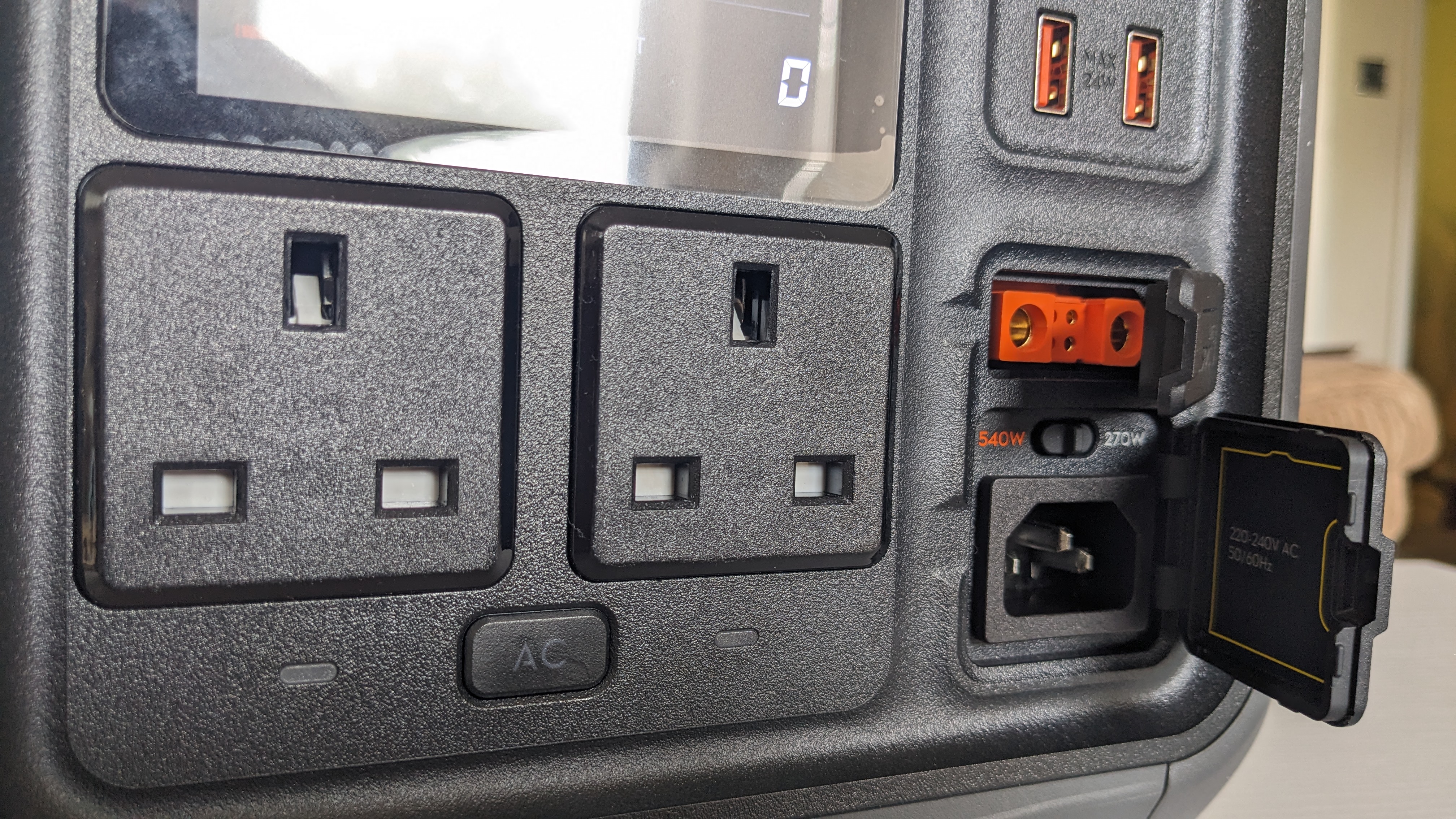
DJI Power 500: In use
Before we got started, we charged up the unit, which took around forty-ish minutes on a standard charge. However, tucked behind the AC input covering, you’ll also find a switch that lets you move from 270w charging to a 540w fast charge. And, happy days, unlike so many power stations we’ve recently reviewed, you can charge this one with the standard IEC C13/14 socket and connector. No worrying about losing an expensive-to-replace proprietary cable here. In addition to this, you can also charge the device using USB-C, although this method is slower. According to the manufacturer, a full charge takes three hours.
Using the DJI Power 500 is simple and efficient thanks to a bright, clear LCD screen. It’s not too cluttered or loaded with unnecessary details and ambiguous icons. Displayed as a percentage to the left, you’ll see the amount of power remaining, while beneath this is a bar measuring battery level during recharge. Although we didn’t experience any during our time with the unit, you’ll also find error messages and warning lights appearing under this bar. Along the top of the screen, you can see which ports and sockets are currently active, and to the right is where input and outputs are displayed.

DJI bills the Power 500 as quiet - up to just 25dB. And we have to say, during our own tests charging a Surface laptop, Pixel phone, and a Nintendo Switch, it was, impressively, near-silent in operation throughout, with no issues with heating. Our devices sapped away at the unit’s battery at more or less the rate we’d expect for a portable power station of this size. DJI estimates the unit will maintain over 70% capacity after 4000 cycles.
Connections were pleasantly firm, and the USB ports in particular have an assuring grip to them. We never felt as though cables may accidentally work their way free or otherwise come free.
Carrying the device isn’t too much of a strain either. That’s not to say it’s super lightweight - you certainly know you have it in your hand - but for anyone of moderate strength, one-handed carry isn’t a pipe-dream. We also found the handle to be well-designed for tilting the unit back at an angle, which lets you view the screen from a standing position. One eye on your power supply, the other on the sky. Although the handle features no grips or contoured moldings to add comfort or assistance to the matte plastic, the thick, ovular design nestled nicely into the palm and for short distances, we found it relaxed and easy to transport.
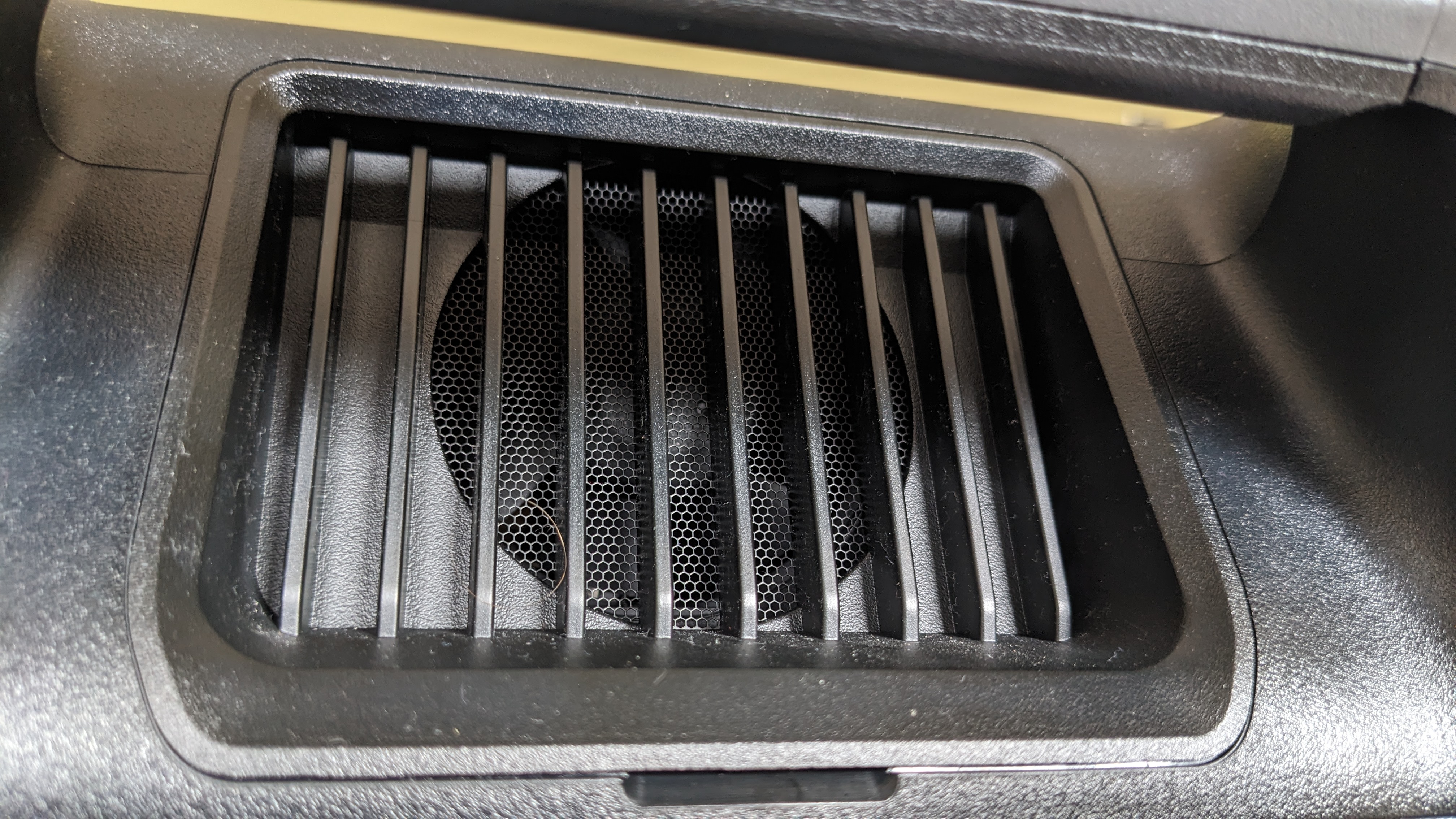
DJI Power 500: Final verdict
The DJI Power 500 is a compact portable power station with enough juice to keep you going while camping, hiking, road-tripping, and general adventuring. We found no issues with performance, and the neat design will absolutely grow on you as it did us. But it’s still a niche product.
We wouldn’t whole-heartedly recommend this power station to the casual user. You can find cheaper units available with more or less the same specifications, with extra generic ports and sockets than you’ll get here. However, none will offer the unique selling point of the Power 500: the ability to recharge DJI drones on the go. If you want that, alongside all the other benefits of a highly portable power station, the DJI Power 500 is an excellent choice.
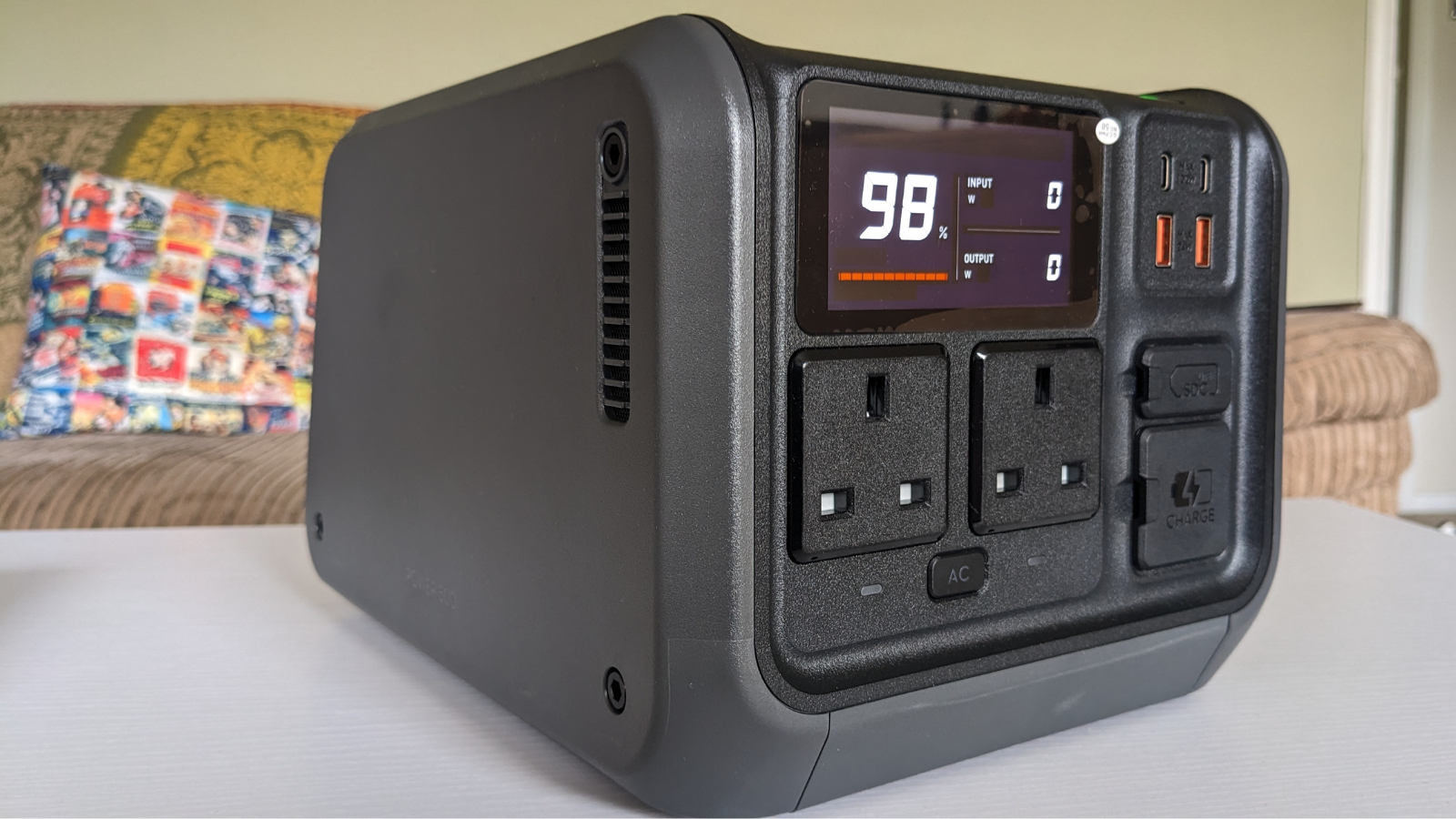
Should I buy the DJI Power 500?
Buy it if…
You own a DJI drone
The DJI Power 500 is designed for DJI drones, thanks to the built-in SDC port for charging. If you’re a serious drone-owner that doesn’t need the extra capacity of the Power 1000, the 500 model is ideal.
You’re a creative who needs power in the field
This is a neat and light portable power solution, particularly for creators who need to power devices and drones while outside. If that’s been a sticking point for you, this is the unit that solves that problem.
Don’t buy it if…
You don’t have a drone
What separates the DJI Power 500 from the competition is the addition of an SDC port for charging drones - and if you don’t need that, you’re better off getting a unit that includes a port you can use.
You need a rugged device for outdoor work
While this unit is more than capable of charging smaller devices on-the-go, it lacks the capacity and durability of a true outdoor portable power station.
Looking for something smaller? We compared the best laptop power banks.

Steve is B2B Editor for Creative & Hardware at TechRadar Pro. He began in tech journalism reviewing photo editors and video editing software at Web User magazine, and covered technology news, features, and how-to guides. Today, he and his team of expert reviewers test out a range of creative software, hardware, and office furniture. Once upon a time, he wrote TV commercials and movie trailers. Relentless champion of the Oxford comma.
